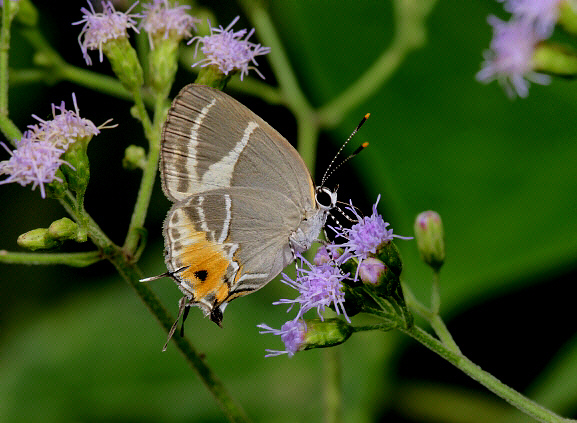
Introduction
Almost all neotropical Theclinae species are placed in the Eumaeini. The tribe is not particularly well represented in collections, so until fairly recently a high percentage remained unstudied, and were inappropriately filed away in the ‘convenience’ genus Thecla. Many taxonomists have attempted to rationalise the systematics of the Eumaeini, the most recent being Robbins who published a revision in 2004, reclassifying the taxa into 83 genera. Currently there are 1058 known species. Taking into account their small size, secretive behaviour, and the great similarities between many species, it is estimated that about another 200 species probably remain to be discovered.
The genus Terenthina comprises just 2 species – bradyae, which is distributed from Costa Rica to Ecuador and Venezuela; and terentia, which is found in the Orinoco, the Amazon basin and the south-eastern Andes.
Habitats
This species occurs in rainforest and cloudforest habitats at altitudes between about 200-1800 m.
Lifecycle
To be completed.
Adult behaviour
Both sexes nectar at Eupatorium, Lantana, Senecio and other wild flowers, spending long periods walking slowly about visiting every flower head on each plant.
As they move about, they slowly oscillate the hindwings. This has the effect of drawing attention to the false eyespot and also causes the “false antennae” tails to wiggle. It is generally accepted that this functions to divert bird attacks away from the butterfly’s body, and onto the outer wing area, allowing the butterfly to escape with just a peck taken out of it’s wing. However it is notable that wing oscillation is commonly practiced by most other Eumaeines, including many which have neither eyespots or false antennae. Clearly the explanation for this practice lies elsewhere.
Eumaeine males have a patch of androconia ( scent scales ) on the upper wings, and it is the author’s opinion that oscillating the hindwings would serve to dislodge some of these scales and assist in disseminating the pheromones. It would therefore make an interesting study to ascertain whether this practice is adopted by both sexes, or just by males.
